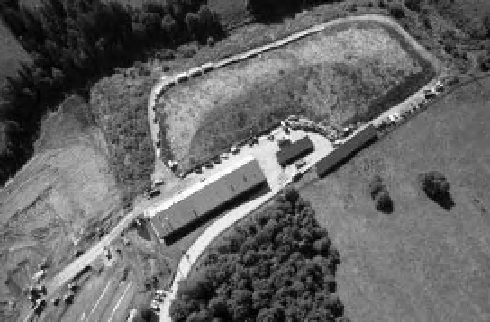Geoscience Reference
In-Depth Information
out in many places to enhance forestry,
expand agriculture, and produce peat. As
examples from chapter 11 illustrate, increased
resource extraction would further stress
wetland sites and make them acutely vulner-
able to change.
Poverty - Poverty can be an inl uential driver in
wetland habitat degradation, often working
in tandem with other local socio-economic
factors including inequality, landlessness, and
the social and economic marginalization of
rural populations. Under such circumstances,
human vulnerability to even small distur-
bances within the natural system may have
acute consequences. Extreme poverty drives
the overuse of resources and limits the ability
to reinvest in habitat protection or sustain-
able harvesting practices. Such practices may
perpetuate and undermine local economies
as natural capital is systematically depleted.
While poverty alleviation is a key focus of
the U.N. Millennium Project, it remains to be
seen how much progress will be made toward
such a goal (Millennium Project 2011).
Climate change - Climate oscillations have
impacted and shall continue to inl uence the
structure and function of wetlands (Fig. 18-4;
see chapter 8). In many cases, wetlands may
need to adapt more quickly to rapidly chang-
ing conditions brought on by anthropogenic
inl uences in climate change. Changing cli-
matic patterns driven by rising global tem-
perature could inl uence freeze-thaw cycles,
affect variability in precipitation, increase
the risk of inundation, trigger seasonal
increases in sea-surface temperature, induce
latitudinal or altitudinal shifts in plant and
animal species, and increase the frequency of
extreme storm events
-
to name just a few.
The inl uence of each of these factors on
wetlands would vary geographically and in
magnitude. Moreover, the adaptive capacity
of wetlands in the face of such changing
conditions is also inl uenced by local human
patterns of use.
Institutional and governance failures - As
chapter 11 elaborates, property rights institu-
tions direct the use of resources, including
wetlands. Those habitats with clearly dei ned
Figure 18-3.
Overview of landi ll in southern Poland.
Former landi ll (top), recycling station (center), and
active landi ll (left). Such careful management of
human trash and waste reduces pollution of wetlands
in the vicinity. Kite airphoto by J.S. Aber, S.W. Aber, R.
Zabielski and M. Górska-Zabielska.
As the developing world similarly pursues
the race for industrialization and economic
growth, it remains to be seen whether past mis-
takes may be avoided. Through global efforts
such as the U.N. Millennium Project, which
focuses on poverty reduction and education,
governments may be urged to adopt a longer-
term vision and to embrace the concept of sus-
tainable development (Millennium Project 2011).
Likewise, advances in technology and technol-
ogy transfers may allow countries to leap-frog
older polluting technologies for greener alterna-
tives. The fundamental linkage of environmental
health to human well-being and a country's
development aspirations may aid in reorienting
policy to incorporate sustainable development
principles.
Resource demands - The demand for fresh
water and land for agricultural and urban
development remain key threats to wetland
environments across the globe. In the past,
deliberate conversions to other land uses
were driven by a lack of understanding of the
role wetlands play within the Earth's system.
Despite the current state of scientii c knowl-
edge about wetlands, the demand for agricul-
tural land, urban expansion and industrial
development often supersede conservation
priorities. Mire drainage is still being carried





